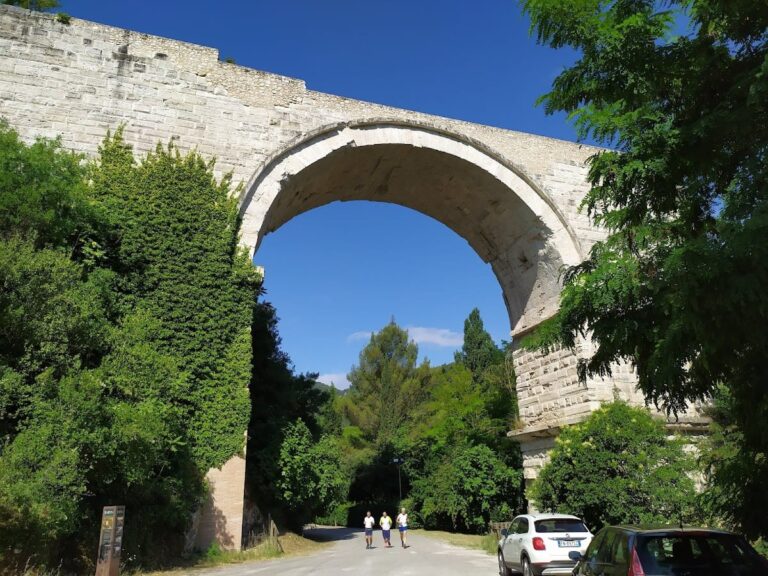Castle of Matterella: A Medieval Fortress in Ferentillo, Italy
Visitor Information
Google Rating: 4.2
Popularity: Very Low
Google Maps: View on Google Maps
Country: Italy
Civilization: Unclassified
Remains: Military
History
The castle of Matterella is located in the municipality of Ferentillo, Italy. It was constructed during the medieval period by the local feudal powers to secure strategic routes and protect important religious sites in the region.
Its origins date back to between the 11th and 12th centuries, when the fortress was centered around a square tower that stood watch over the village of Matterella. This stronghold was part of a broader defensive network that included the fortifications of Precetto, Monterivoso, and Ancaiano. Together, these fortresses formed a protective shield for the nearby Abbey of San Pietro in Valle while overseeing vital communication pathways. The castle controlled the road leading to the Duchy of Spoleto and, alongside the castle of Precetto, monitored the route following the Nera River that connected to the Upper Valnerina area. Scholarship suggests that its role in defense was closely tied to the rebuilding of the Abbey, a project initiated by Emperor Otto III in 996 AD as a response to Saracen raids that threatened the territory.
In the 15th century, the castle underwent significant military enhancements. The original square tower was fortified with two large cylindrical bastions, reflecting the evolving methods of military architecture at the time. Legal documents from the period, including statutes issued by Prince Alberico I Cybo Malaspina, Duke of Ferentillo, identify the castle as the headquarters for local militia charged with defending the State of Ferentillo. This points to the fortress’s continued role as a military center during the late medieval period.
By the late 16th century, the castle also had a religious presence, evidenced by records showing a chaplain living within its walls. A notarial act of the time recounts the solemn transfer of the chaplaincy, accompanied by ceremonial paraphernalia connected to the administration of justice, indicating the site’s dual military and spiritual functions.
Ownership of the castle changed hands several times through the centuries. Initially held by the Trinci family of Foligno until 1484, it was then granted by Pope Innocent VIII to Franceschetto Cibo. The fortress remained under the control of the Cibo family and their successors, the Cybo-Malaspina, until 1730. After that, the property was sold to Niccolò Benedetti, and through inheritance it passed to the Benedetti Montevecchio family. Although parts of the duchy were sold off during the 19th and 20th centuries, the fortress itself remained distinct from these transactions. In 1940, Duke Benedetto Montevecchio Gualfredo sold the stronghold to three local families: the Pennacchi, Argenti, and Fiorelli. The Argenti and Fiorelli transferred their ownership shares to the municipality in 2008, and following a court decision in 2010, the Pennacchi share was also ceded, resulting in the fortress becoming municipal property.
Remains
The castle of Matterella is laid out with a dominant central square keep, which formed the core defensive structure of the fortress. This main tower, dating from its earliest construction phases in the medieval period, provided elevated oversight of the village below and the surrounding landscape. In the 15th century, two large cylindrical bastions were added at the corners flanking this keep, a feature typical of fortifications from that era designed to improve the stronghold’s capacity to withstand and repel attacks.
Surrounding the central tower and bastions is a defensive wall that encloses the complex. These walls, built using traditional medieval materials, create a fortified perimeter that emphasizes the site’s function as both a military outpost and a protective enclosure for residents and garrisoned troops. The fortress is situated on the slopes of Mount Gabbio, taking advantage of the natural terrain to enhance its surveillance and defensive capabilities over nearby communication routes and the adjacent settlement.
Photographic evidence shows that key structural components such as walls and towers remain intact, preserving the outline and imposing presence of the castle. While detailed features such as decorative elements or inscriptions have not been highlighted in records, the existing architecture illustrates the layered history of adaptation from its medieval origins through later modifications intended to strengthen and maintain the fortress over centuries.
The castle stands today as a physical testament to its historical role in regional defense, with the central keep and cylindrical bastions remaining prominent features that reflect its strategic importance and the architectural styles of different medieval periods.







